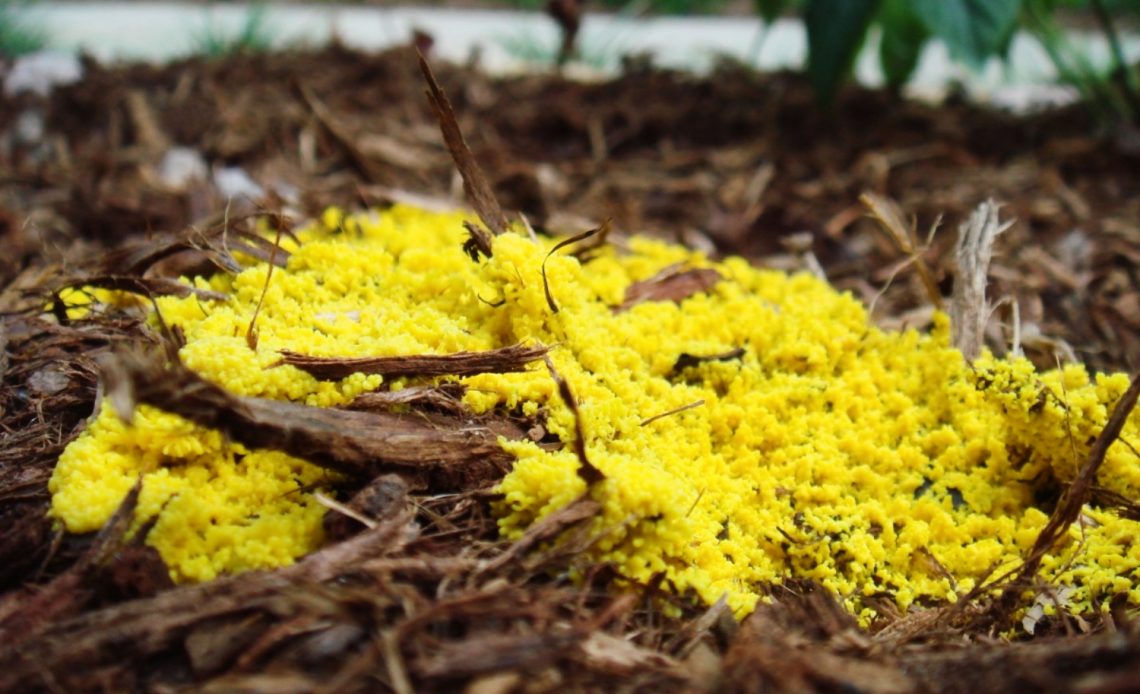

We’re here to help! Wild Yards is a completely free website that is 100% dedicated to helping you create a wildlife-friendly, sustainable yard. Read more
WildYards is reader-supported. When you buy a product through a link on our site, we may earn a comission. Every product is independently selected by our (obsessive) editors and our reviews are unbiased and objective. Read more about our mission or our privacy policy.
It’s not unusual to find mold in potting soil, which tends to stay warm and damp as it is often kept in dark, humid places, like potting sheds and garages.
But if you take a closer look at the soil in your flower beds, you might find some fungal overgrowth there, too. Especially if your flower beds are situated in shady areas.
Soils are rich in fungal spores that can lie dormant for years, waiting for ideal conditions before they begin growing.
White molds are common. Brown, green, and black fungi are pretty easy to spot, too.
But if you’ve stumbled across some yellow fungus in plant soil, you may be wondering what it is, and if it’s harmful to your plants.
Although the yellow fungus growing in your garden’s soil can be alarming, it’s harmless to your plants. This saprophytic fungus breaks down the decaying matter in the soil, making it easier for plants to utilize nutrients.
How to spot yellow fungus in plant soil
Because yellow fungus is, well, yellow, it’s not all that difficult to spot!
Although you’re not likely to find yellow fungus thriving in full sun, take a peek in your shady flower beds and the wooded areas in your landscaping.
Yellow fungus thrives in moist even soggy soils that stay out of direct sunlight.
This type of fungus typically grows on top of the soil near decaying matter, like rotting logs, tree stumps, and piles of dead leaves.
You may also find yellow fungus under the rocks, stones, and bricks that make up the border along your flower beds.
Yellow fungus typically appears in patches that vary in size and shape. However, you may also find yellow mushrooms, which, let’s not forget, are also a type of fungus, and are a common fixture in many lawns and gardens.
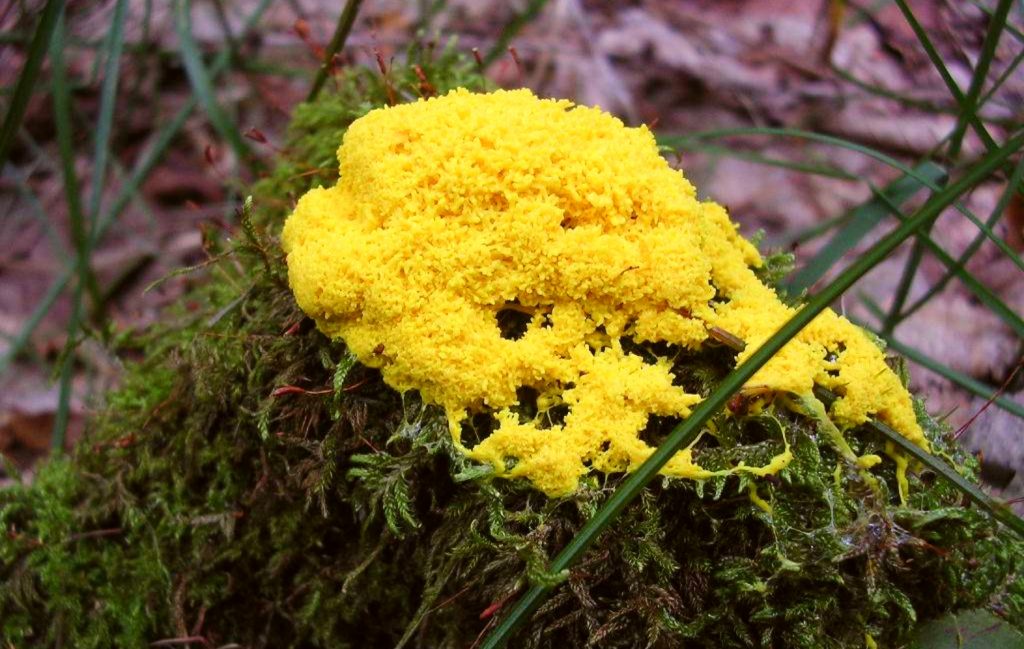
What is the yellow fungus in your plant’s soil?
Not all fungi are alike!
Knowing which types of fungi are growing in your garden will help you decide the best way to deal with them.
When it comes to yellow fungi, there are two different kinds that you’re most likely to spot in your backyard garden.
Leucocoprinus birnbaumii
These bright yellow mushrooms measure 1 to 3 inches in length and gradually lose their vibrant color as they age, turning pale yellow to white.
Called flowerpot parasol and lemon yellow Lepiota, Leucocoprinus birnbaumii has a bell-shaped cap with a bumpy texture.
These mushrooms grow best in warm, humid environments, so they’re usually found sprouting up in shady flower beds in the summertime. However, they can be found growing indoors year-round.
You’re far more likely to notice a Leucocoprinus birnbaumii outbreak in plants that are growing in soils that have been overwatered and/or have poor drainage.
Leucocoprinus birnbaumii can be difficult to control, and commercial fungicides are largely ineffective at eliminating them.
Fuligo septica
Called scrambled egg slime mold or, less deliciously, dog vomit slime mold, Fuligo septica is a blotchy, bright yellow saprophytic mold that degrades organic materials.
This type of mold can be found in damp soils, especially on or near rotting materials. But in some cases, you may even find Fuligo septica growing on living trees that are struggling with rot.
Although Fuligo septica is often referred to as a fungus, it’s not actually a fungus at all.
Fuligo septica is a member of the protist kingdom, not the fungi kingdom. Interestingly, Fuligo septica is more closely related to certain types of seaweed than fungi.
The yellow blotches you find growing in your plant’s soil are the aethalium, AKA the fruiting bodies of the Fuligo septica.
They’re often found in hardwood forests, breaking down oaks, maples, and other deciduous trees.
Why does yellow fungus grow in plant soil?
Fungi and slime mold thrive in shady areas and moist soils, especially when those soils are rich in decaying organic matter.
Most soils contain fungal, mold, and bacterial spores, and those spores will remain dormant indefinitely until conditions are ideal for germination.
Once all of the spore’s growing requirements are met, they will spring to life.
In Leucocoprinus birnbaumii’s case, the spores start by creating an elaborate network of hyphae. These fine, threadlike fibers spread throughout the soil, much like a plant’s roots.
The hyphae secrete enzymes that break down the organic materials in the soil so the fungus can absorb the nutrients.
Eventually, the hyphae produce a fruiting body (the mushroom itself) which then produces spores that can be spread via insects and the wind.
This process is slightly different from the germination of slime mold spores.
Compared to Leucocoprinus birnbaumii, Fuglio septica’s germination process is much less plant-like and similar to watching cells reproduce under a microscope.
When Fuglio septica germinate, they don’t actually germinate, so to speak. They just aggregate, producing more and more amoeboid cells until they’ve formed a mass. They then feed on the surrounding bacteria.
Slime molds produce fruiting bodies, called sporangia, which produce and store spores. Once released, these spores settle in the soil elsewhere, waiting for ideal conditions so they can continue growing and repeat the process.
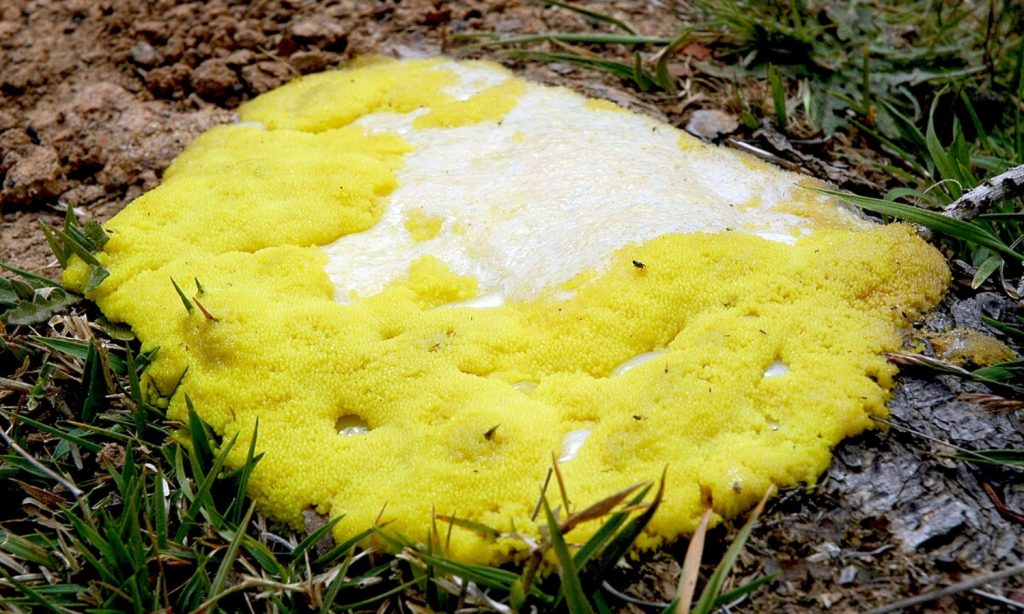
Is yellow fungus bad for plants?
If you’ve found some yellow fungus in your plant soil, you may be alarmed at first. But the good news is, yellow fungus is not bad for plants.
Although Leucocoprinus birnbaumii and Fuglio septica are two separate species, they’re both saprophytic.
That means that instead of relying on photosynthesis to produce food, as plants do, both of these fungi break down decaying materials in the soil and use them for food, instead.
It’s also worth noting that yellow fungi are not parasitic.
These organisms do not prey on living plants. Even if you find them in your flower beds and container gardens, you can rest easy knowing they won’t rob your plants of precious nutrients.
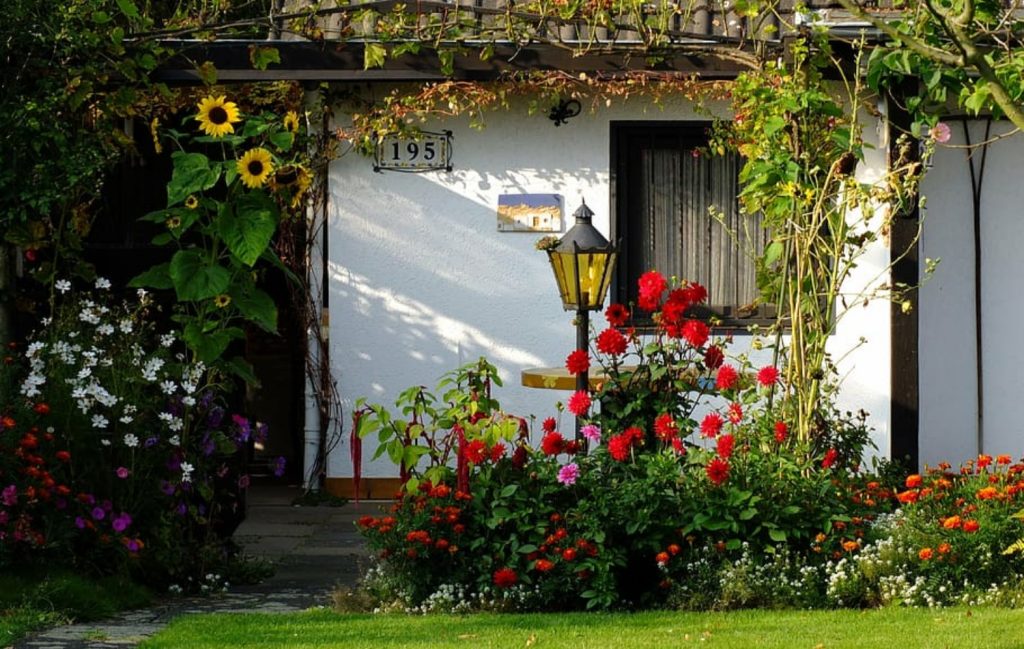
Is yellow fungus bad for people and pets?
Both Fuligo septica and Leucocoprinus birnbaumii are safe when handled.
So if you happen to touch one of these organisms, you won’t suffer any potentially harmful aftereffects, unless you have an allergy to them.
It’s a long-held myth that certain toxic mushrooms are dangerous to touch. But the truth is, even the deadliest mushrooms must be consumed to absorb enough of their toxic compounds to prove fatal.
That said, eating Leucocoprinus birnbaumii could make you sick. These mushrooms are considered to be moderately toxic to humans, resulting in diarrhea, vomiting, nausea, and other gastrointestinal symptoms.
Since Leucocoprinus birnbaumii can be toxic, it’s best to remove these mushrooms as soon as you see them to keep your children and pets safe.
Fuligo septica, on the other hand, is quite edible — although, to be honest, we’re not sure why anyone would willingly eat something called “dog vomit slime mold”.
But, apparently, Fuligo septica has a few diehard fans. Some gardeners grow this slime mold on purpose and use it as an ingredient in their favorite dishes, like “caca de luna”, a Mexican scrambled egg dish.

How can you get rid of yellow fungus in plant soil?
While yellow fungus in plant soil isn’t likely to harm the plants in your garden, you can certainly remove it if you find it unsightly.
There are several ways to remove yellow fungi from your garden.
Uproot mushrooms
The easiest way to remove mushrooms is to simply pull them up. Cover the mushrooms with a plastic bag, then uproot them.
Covering the mushrooms helps contain the spores.
Try to remove the mushrooms as soon as they pop up, that way they won’t get a chance to release their spores and create more problems for you down the line.
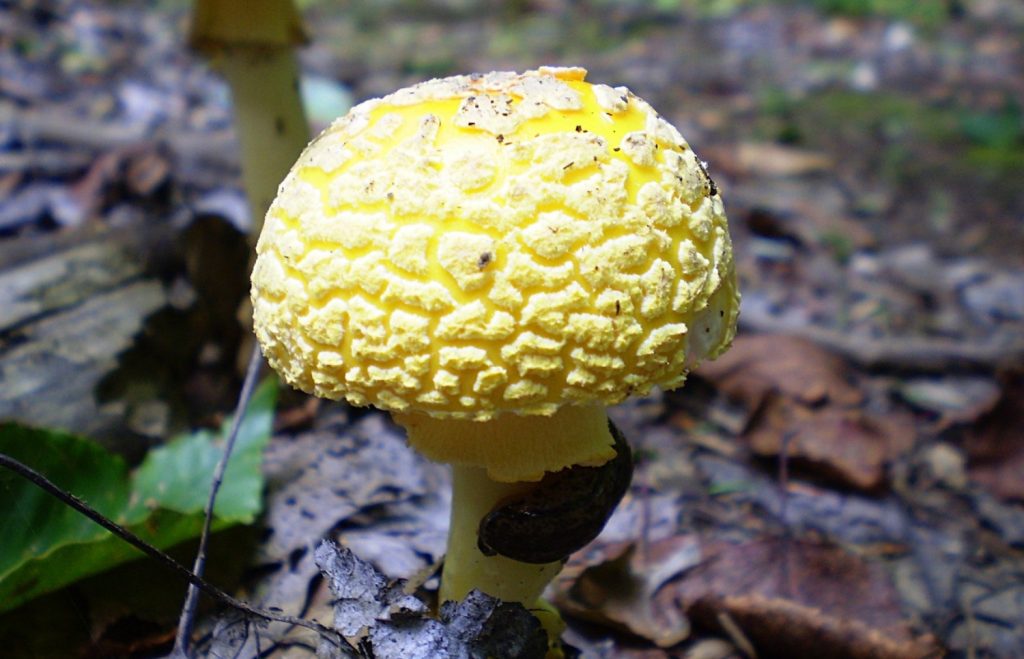
Rake up slime molds
As for slime mold, the best way to remove it is to rake it up.
Small patches of slime mold can be raked away from the soil. Because these molds aggregate, they’re pretty easy to remove, often prying up as a single mass.
But, if you find a patch of slime mold difficult to remove, use a hose to break it up. The “jet” setting on your hose nozzle should be powerful enough to rip the slime mold apart.
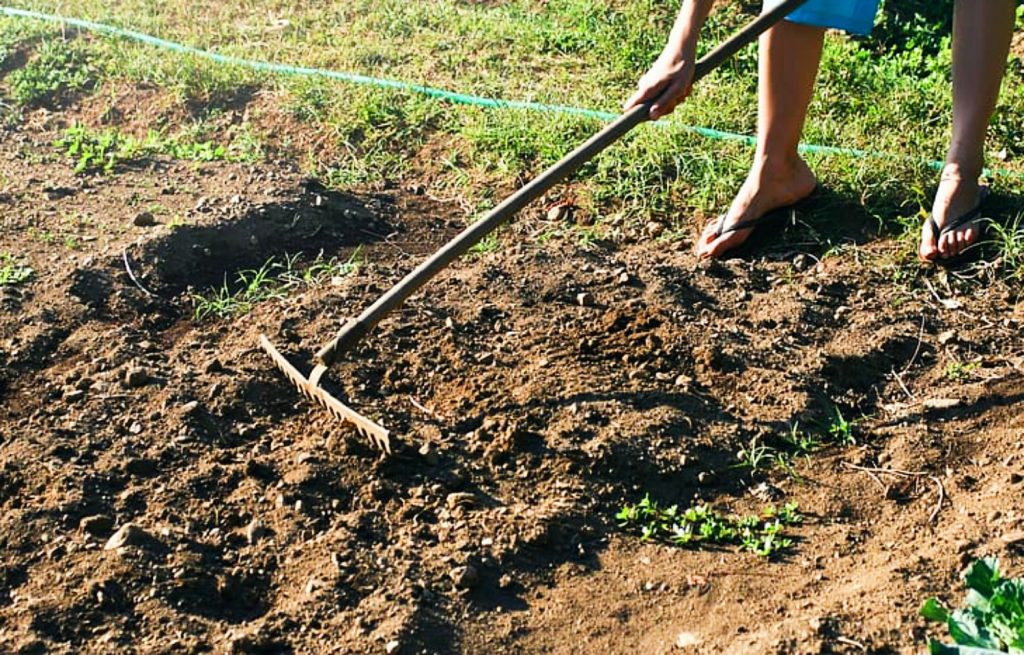
Remove infected soil and mulch
If you find Leucocoprinus birnbaumii and Fuligo septica spreading in your mulched flower beds, rake up the infected mulch and discard it.
For potted plants, simply repotting them in new soil is an easy way to contain the fungal outbreak.
It’s safe to add the old mulch and/or soil to your compost heap. In fact, it’s highly recommended that you do so since fungi and slime molds break down organic materials and can help create a nutrient-rich fertilizer for your plants.
Note: However you choose to remove fungi and/or slime molds, be sure to wear gloves, long sleeves, goggles, and a mask when handling them, just in case you happen to be sensitive to their spores. Even if you don’t have an allergy to these organisms, they can be irritating to the skin and sinuses.
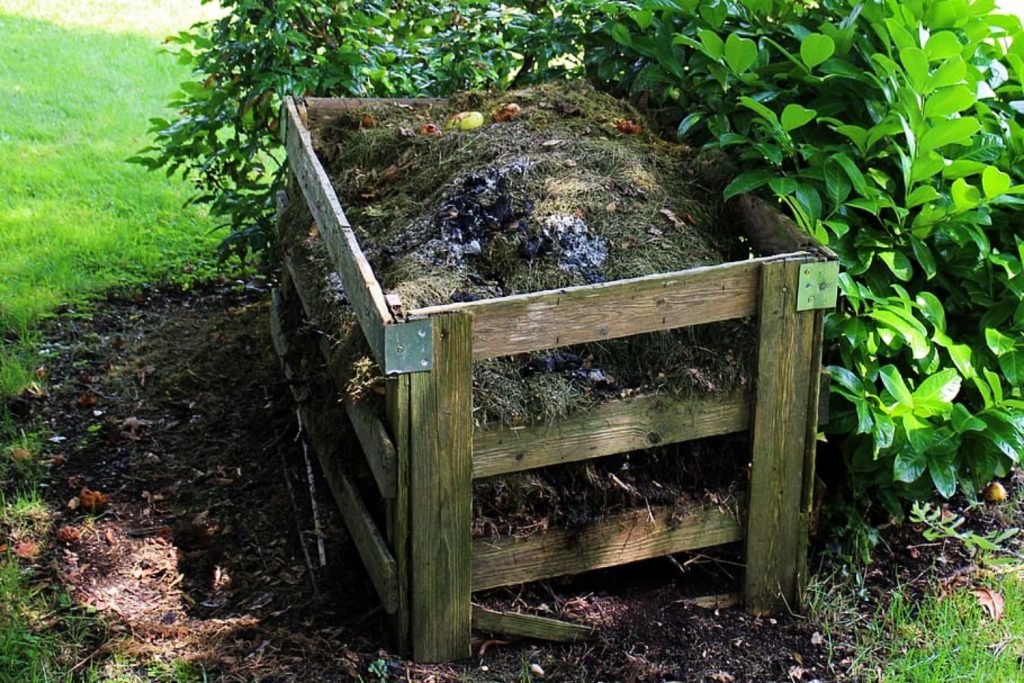
How can you prevent yellow fungus in plant soil?
Once you’ve got the yellow fungus under control, you may wonder how you can prevent it from sprouting up in the first place.
Here are a few tips for preventing fungi from taking over your garden soil.
Improve soil drainage
Since fungi and molds thrive in moist soils, the best way to prevent yellow fungus in plant soil is to improve drainage and keep a strict watering schedule.
Feel the soil before watering your plants. If the soil still feels damp an inch below the surface, allow it to dry out a bit more before watering.
On the other hand, if you find that your soil is staying too moist, use horticultural sand to improve drainage.
Loose, porous soil makes it easy for excess water to run off quickly.
This won’t just prevent spores from germinating, but it will also improve plant health by ensuring oxygen can penetrate down to the roots.
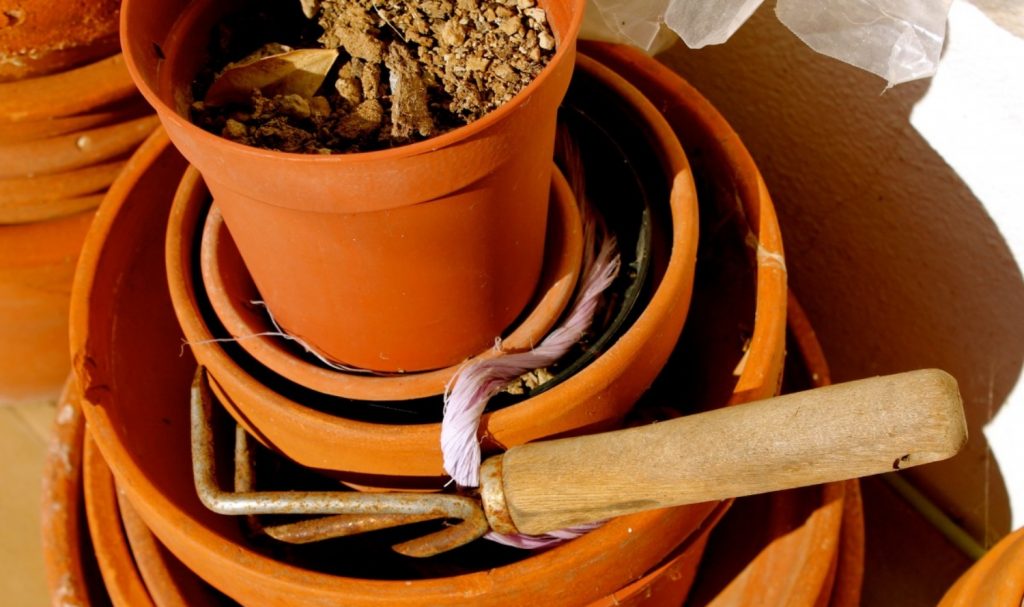
Remove mulch from shady flower beds
Plants growing in the shade tend to stay hydrated more easily than those growing in full to partial sunlight.
Since mulch is used to help plants retain moisture, this can make the soil too moist for shade-loving plants like elephant ears.
If you’ve found Leucocoprinus birnbaumii or Fuligo septica in your shady flower beds, rake the mulch away.
This improves air circulation, allowing the soil to dry out a bit so it’s less hospitable to dormant spores.
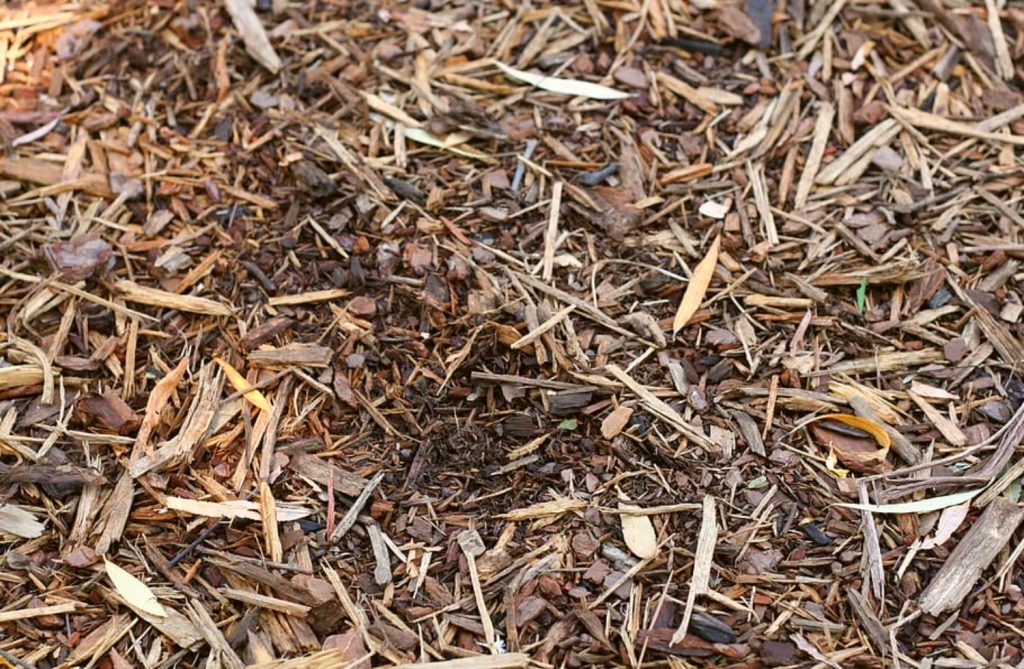
Spray an antifungal solution
Because slime molds and fungi spread via microscopic spores, it’s impossible to remove these organisms for good.
But, you can get a handle on them by spraying your garden’s soil with an all-natural antifungal solution.
Start with a 1 to 1 ratio of vinegar water. The acid in the vinegar disrupts the fungi’s pH, breaking it down quickly. If this doesn’t work, you can spot-treat with straight white vinegar.
You can also use a baking soda dilution to treat the fungi. Dissolve 1 ½ tablespoons of baking soda in a gallon of water, and spray the mixture onto the fungi.
Try adding a few drops of neem oil to the solution of your choice to spray the soil after you’ve removed the fungi.
This can help neutralize the spores by disturbing the pH of the soil, and the neem oil acts as a potent antifungal agent.
Should you worry about yellow fungus in plant soil?
The yellow fungus out in your garden does not pose any threat to your plants.
In fact, these fungi are actually a good thing. They help break down decaying materials, making the nutrients easier for plants to absorb.
Finding slime molds and fungi in your soil is a sign that it’s rich in vitamins and minerals your plants need to thrive.
That said, a fungal outbreak can also signify poor drainage. If you’re seeing more fungi in your backyard, it’s worth reevaluating your soil and watering schedule to see if there’s any room for improvement.
Overall, as long as you don’t have kids or animals who may ingest the yellow fungi, there’s no need to worry about it.
If you’re fine with these organisms residing in your flower beds, then it’s A-OK to leave them alone!
